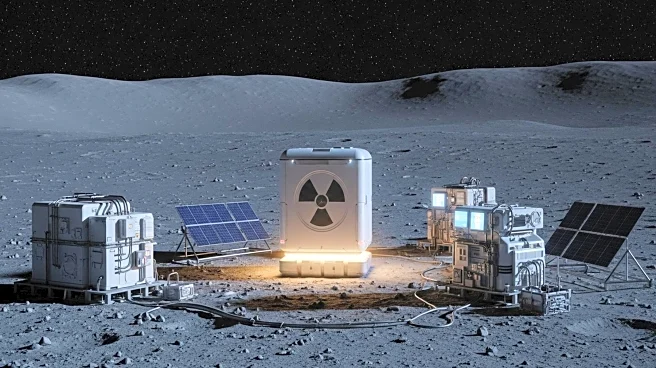What's Happening?
NASA is progressing with its plans to develop a lunar nuclear power system, focusing on commercialization. The agency released a draft Announcement for Partnership Proposals (AFPP) for its Fission Surface Power initiative, seeking industry input. The initiative aims to create a reactor capable of producing at least 100 kilowatts of power, ready for launch by 2029. NASA plans to implement this through public-private partnerships, allowing companies to own the reactor and sell power to NASA and other customers. The draft AFPP outlines requirements, including a closed Brayton cycle power conversion system, and seeks input on cybersecurity and reactor fuel.
Why It's Important?
The development of a lunar nuclear power system is a strategic move to ensure sustainable energy sources for future lunar missions. By focusing on commercialization, NASA aims to foster a competitive market for space nuclear power, potentially reducing costs and accelerating technological advancements. This initiative could position the U.S. as a leader in space nuclear technology, countering similar efforts by other nations. The emphasis on public-private partnerships reflects a shift towards leveraging commercial capabilities to achieve strategic goals, potentially benefiting both NASA and the private sector.
What's Next?
NASA is expected to finalize the AFPP by October 3, with awards anticipated by March 2026. Companies will submit proposals outlining their strategies and potential customer bases, with NASA evaluating proposals based on their commercial viability. The development of the reactor will involve collaboration between NASA and selected companies, with the goal of launching the system by 2029. As the initiative progresses, it may attract additional industry partners, further expanding its impact and accelerating the development of space nuclear technology.













